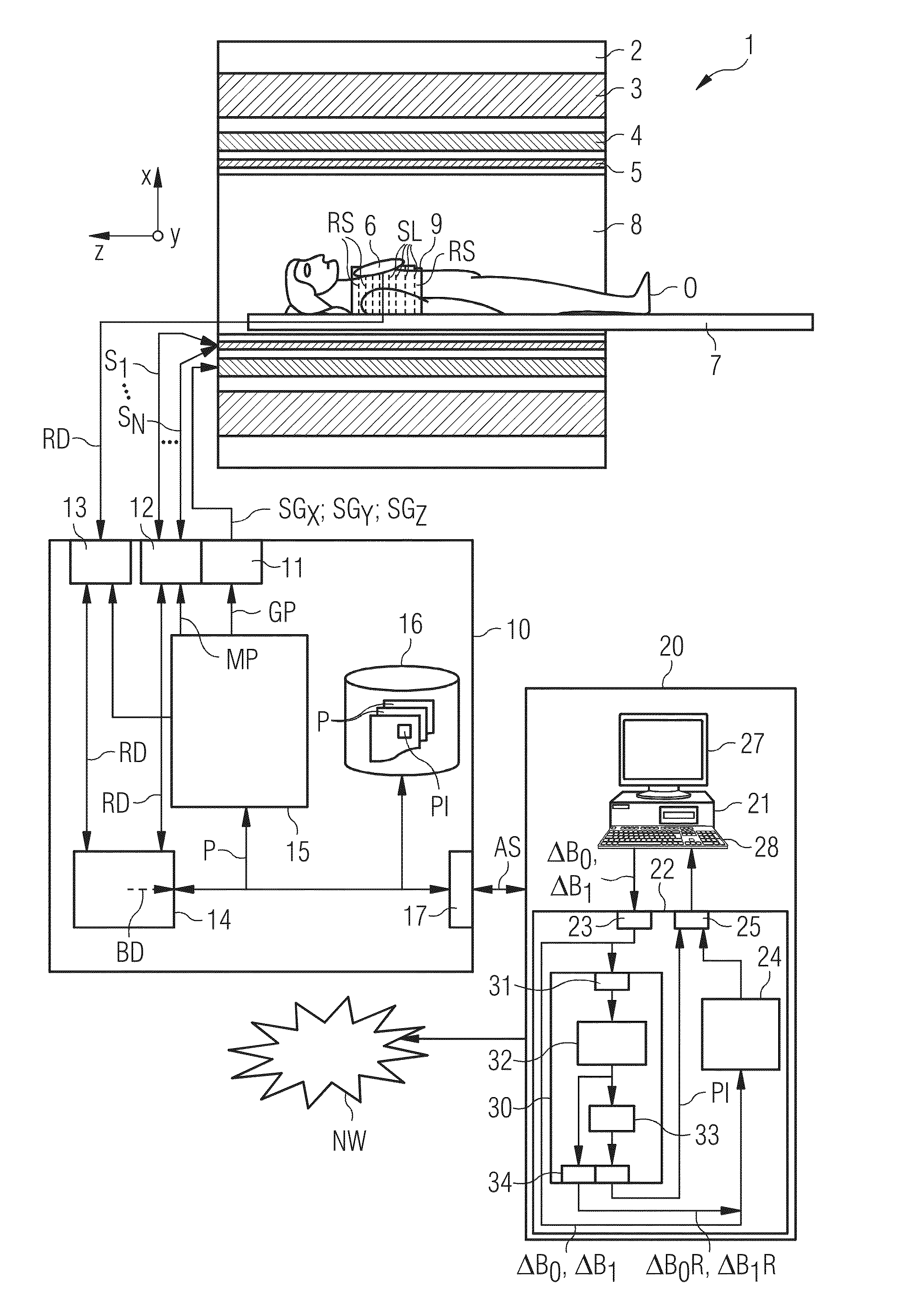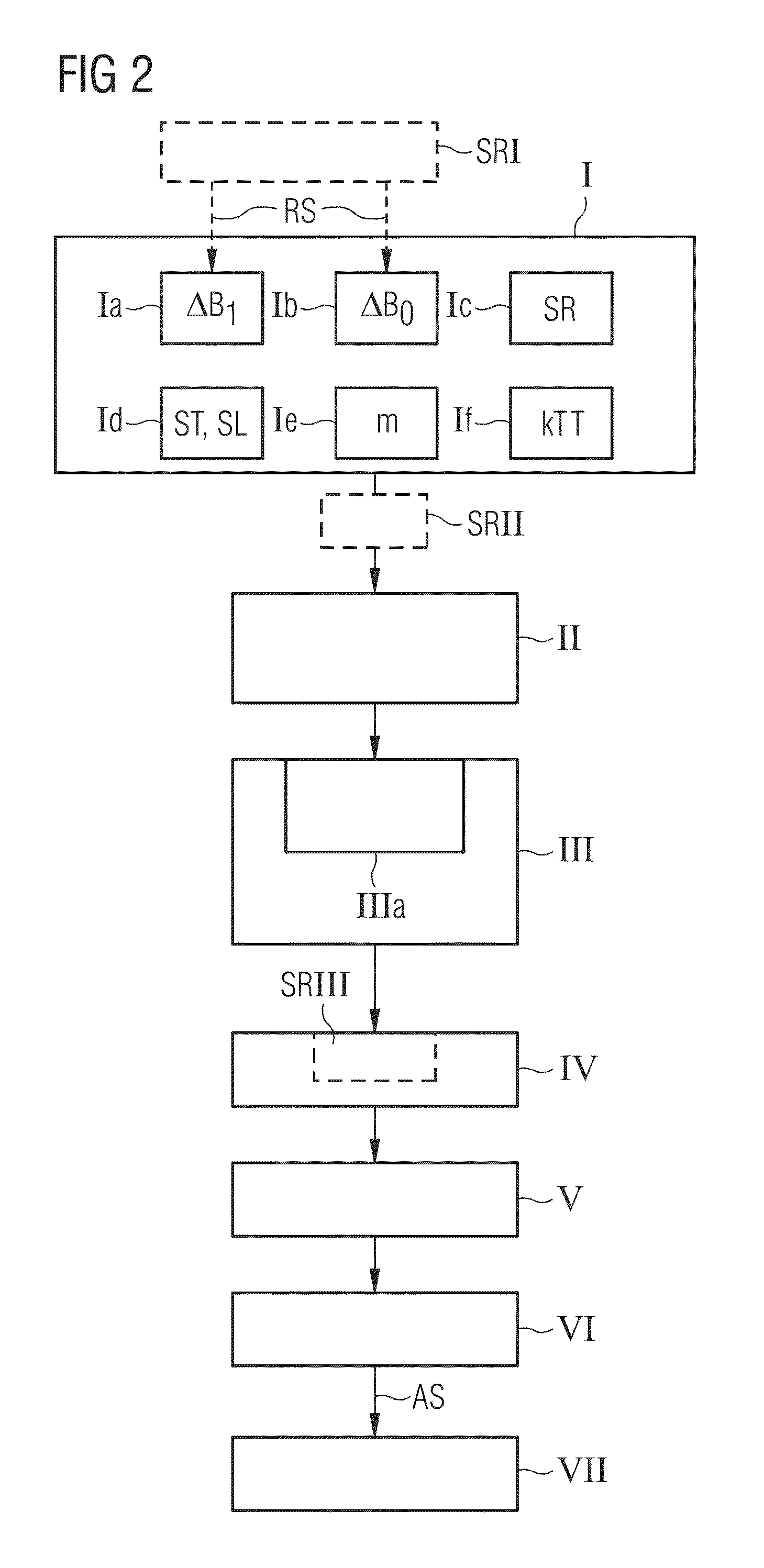Establishing a Magnetic Resonance System Actuation Sequence
a magnetic resonance system and sequence technology, applied in the field of methods, can solve the problems of increasing the overall examination duration within the clinical routine, the computational complexity of the optimization method, and the data load of the optimization method caused by the field distribution map becoming problematic, so as to achieve the reduction of the overall duration of the field distribution map, save significant outlay, and reduce the computational complexity
- Summary
- Abstract
- Description
- Claims
- Application Information
AI Technical Summary
Benefits of technology
Problems solved by technology
Method used
Image
Examples
Embodiment Construction
[0069]FIG. 1 depicts, in a schematic manner, a magnetic resonance machine 1. The magnetic resonance machine 1 includes the actual magnetic resonance scanner 2 with an examination space 8 or patient tunnel situated therein. A couch 7 may be displaced into this patient tunnel 8 such that, during an examination, an examination object O (patient / subject) may be placed at a specific position within the magnetic resonance scanner 2 relative to the magnet system and radiofrequency system arranged therein and also be moved between different positions during a measurement.
[0070]Essential components of the magnetic resonance scanner 2 are a main field magnet 3, a gradient system 4 with magnetic field gradient coils for applying any magnetic field gradients in x-, y- and z-directions, and also a whole body radiofrequency coil 5. Magnetic resonance signals induced in the examination object O may be received by the whole body coil 5 with which the radiofrequency signals may also be emitted for i...
PUM
 Login to View More
Login to View More Abstract
Description
Claims
Application Information
 Login to View More
Login to View More - R&D
- Intellectual Property
- Life Sciences
- Materials
- Tech Scout
- Unparalleled Data Quality
- Higher Quality Content
- 60% Fewer Hallucinations
Browse by: Latest US Patents, China's latest patents, Technical Efficacy Thesaurus, Application Domain, Technology Topic, Popular Technical Reports.
© 2025 PatSnap. All rights reserved.Legal|Privacy policy|Modern Slavery Act Transparency Statement|Sitemap|About US| Contact US: help@patsnap.com



